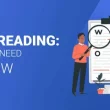Introduction
In our interconnected world, global conflicts are often reported in real-time, reaching audiences across the globe through various news outlets. However, how these conflicts are covered can vary dramatically depending on the country and its political, cultural, and economic influences. The portrayal of wars, humanitarian crises, and political unrest in the media can shape public perception, influence policies, and even sway international relations. From censorship to media bias, the way different nations cover global conflicts reveals much about their priorities, ideologies, and alliances.
In this article, we will explore the factors that determine how global conflicts are covered differently around the world. We will look at the role of media, government influence, cultural perspectives, and regional interests in shaping the coverage of international events. Understanding these variations in coverage is crucial for anyone who wants to gain a more comprehensive understanding of global issues and the complex ways in which they are presented to the public.
Rise in Attention to Global Conflict Coverage
In recent years, global conflicts have received more attention than ever before. With the rise of the internet, social media, and 24-hour news, people around the world can now follow wars and crises as they happen. Because of this, more countries and news organizations are reporting on global events. However, the way these conflicts are reported can be very different from place to place. News stories are often shaped by the country’s politics, culture, or media rules. As more people seek to understand global issues, they are starting to notice these differences in news coverage.
The Role of Media in Global Conflict Coverage

Media is often the first source of information during global conflicts. In a world where information is so readily accessible, people turn to newspapers, TV broadcasts, and, increasingly, social media platforms to understand what’s happening on the ground. However, not all media outlets are created equal. The way global conflicts are covered can be heavily influenced by several factors, including government control, public opinion, and corporate interests.
1. Government Influence and Media Censorship
In many countries, governments play a significant role in controlling or influencing media coverage of global conflicts. Authoritarian regimes, in particular, often restrict the flow of information that reaches the public. For instance, during times of war or political unrest, governments may issue censorship orders to block or limit foreign news coverage. In countries like North Korea, Russia, or China, the government tightly controls what information can be disseminated, shaping how citizens perceive international events.
For example, during the conflict in Ukraine, Russian state-run media portrayed the situation as a “special military operation” while downplaying or outright censoring reports of civilian casualties and war crimes. In contrast, Western media outlets, such as those in the U.S. and Europe, offered a different narrative, emphasizing the humanitarian crisis and human rights violations.
2. Corporate Media and Bias
Even in democratic nations, media outlets are often influenced by corporate interests. Large media companies, which own multiple news channels and digital platforms, can have their own biases based on their ownership, political affiliations, or financial interests. This can lead to a skewed portrayal of global conflicts, where certain narratives are emphasized over others.
For instance, during the Iraq War in the early 2000s, major U.S. news outlets were heavily criticized for their uncritical reporting of the war’s justifications, particularly the allegations of weapons of mass destruction. Similarly, the coverage of the Syrian Civil War has varied depending on the media outlet, with some focusing on the humanitarian impact, while others emphasize geopolitical interests.
Cultural Perspectives and Public Opinion
Cultural attitudes and public opinion also play a key role in shaping how global conflicts are reported. People’s views on war and international politics are often influenced by their cultural background, education, and personal experiences, which can affect the way they interpret and respond to news about conflicts abroad.
1. Cultural and Historical Context
In some countries, historical events and cultural values can heavily influence how conflicts are perceived and covered. For example, countries with a history of colonialism may view conflicts in former colonies differently than nations without such a history. For instance, the war in Afghanistan has been perceived through vastly different lenses in the U.S. compared to the people of neighboring Pakistan, who have had a long history of involvement in the region.
In the Middle East, the Israeli-Palestinian conflict is often covered with different perspectives depending on the country. In Israel, the narrative is often focused on security and self-defense, while in many Arab nations, the conflict is framed as a struggle for Palestinian rights and freedom. These differing cultural viewpoints influence how each population perceives the conflict and which side they support.
2. National Pride and Public Opinion
National pride and public opinion can also shape media coverage. In countries with a strong sense of nationalism, there may be a tendency to portray the actions of their own government or military in a positive light. This bias often extends to the coverage of foreign conflicts. For example, during the Gulf War, the American media largely supported the U.S. military’s involvement, reflecting the public’s patriotic sentiment and belief in their country’s role as a global leader.
In contrast, media in countries that have been directly impacted by a conflict, such as refugees from the Syrian Civil War, may offer more compassionate and nuanced reporting. They may focus more on the human cost of the conflict, bringing attention to the suffering of civilians.
Geopolitical Interests and Alliances

Another critical factor in how global conflicts are covered is the geopolitical interests and alliances of a country. Nations align themselves based on economic, military, or strategic interests, which can heavily influence their stance on international conflicts and the narratives they support.
1. Political Alliances and Strategic Interests
Countries that are part of certain political or military alliances often present global conflicts in ways that align with the interests of their allies. For example, NATO countries typically support each other in conflicts, so coverage in member states may reflect a shared viewpoint. During the 1999 Kosovo War, NATO allies presented the intervention as a necessary step to stop ethnic cleansing, while Serbia and its allies offered a contrasting narrative, emphasizing sovereignty and resistance to foreign interference.
Similarly, China’s support for North Korea during times of international conflict reflects their strategic alliance, while Western nations may portray North Korea’s actions as aggressive or provocative. This geopolitical influence impacts the coverage of the situation, and citizens of different countries may receive very different versions of the same event.
2. Economic Interests
Countries with strong economic ties to a particular region or conflict may also skew their media coverage to align with their interests. For example, nations heavily dependent on oil imports may be more hesitant to criticize oil-producing nations involved in conflict, while countries with significant investments in global trade routes may have different perspectives on conflicts in regions like the South China Sea.
The Role of Social Media and Citizen Journalism
In the digital age, social media and citizen journalism have transformed the way global conflicts are covered. Platforms like Twitter, Facebook, and YouTube allow real-time updates and videos from citizens on the ground, bypassing traditional media outlets and offering a more diverse range of perspectives.
While social media offers the potential for more diverse and unfiltered coverage, it also presents challenges. Misinformation, propaganda, and bias can spread quickly, complicating the picture for global audiences. For example, during the Arab Spring, social media played a crucial role in mobilizing support and sharing information, but the influx of unverified reports made it difficult to discern fact from fiction.
Challenges in Global Conflict Reporting
Reporting on global conflicts is not easy. Journalists often face danger when working in war zones or areas with violence. They may have limited access to the truth, especially when governments or groups hide facts or spread lies. In some countries, reporters are not free to speak honestly and may be arrested or silenced. Another big challenge is bias. Every news outlet has its own point of view, which can lead to unfair or one-sided reporting. Sometimes, stories are told in a way that fits a political goal instead of showing the full truth. These challenges make it hard for the public to always know what’s really going on.
Future of Global Conflict Reporting Around the World
In the future, global conflict reporting may become more open and connected. As more people use smartphones and social media, regular citizens can also share news from the ground. This means we will get more voices and points of view. New technologies like AI and fact-checking tools may help stop the spread of fake news and improve truth in reporting. Still, there will be challenges, especially in places where media freedom is limited. But as people become more aware of bias and demand honest news, reporters and media outlets may work harder to give clear, balanced stories. The future of conflict reporting depends on the fight for truth and freedom of the press.
Conclusion
The way global conflicts are covered can vary widely depending on the country, the media outlets, and the geopolitical interests involved. Government influence, corporate media bias, cultural perspectives, and geopolitical alliances all play significant roles in shaping how news is presented to the public. Additionally, social media has added a new layer of complexity to global conflict reporting, allowing for a wider range of voices but also introducing challenges such as misinformation.
As consumers of news, it is essential to be aware of the different narratives and biases that exist in media coverage of global conflicts. A nuanced understanding of these factors will help us interpret the information we receive more critically and engage with the world’s most pressing issues in a more informed and responsible way.
Read More: Click Here












